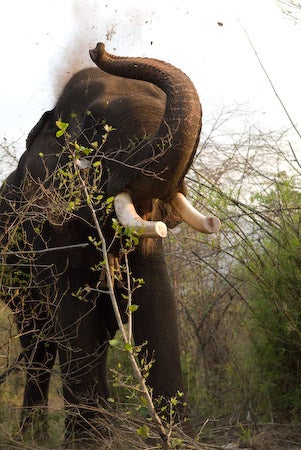
I just returned from Thailand where I spent two weeks working with Trip Jennings, one of the athletes feature in this month’s , on his . The 27-year-old filmmaker is using a mix of science and adventure to slow poaching. We were in Bangkok, one of the world’s biggest illegal ivory hubs, to kick off the year-long project. Poachers in Africa send raw ivory to Thailand, where sculptors turn it into art in Thailand and then send it to markets in China and Japan. It’s a hot, though highly illegal, commodity in Bangkok, and we were trying to find who was buying it and where. After a week of riding subways and tuk tuks to open-air craft markets where we saw nothing, we got smart and started shopping in the dozens of swanky hotels rising from the city’s smog. Our biggest find (no, we didn’t buy any) was a $5,000 carved tusk hidden beneath the display window of an English-speaking gift shop.
Beautiful and grim ivory art is the centerpiece issue at , or CITES, meeting in Doha, Qatar. The organization will discuss 40-some proposals that help govern the trade of endangered species. Likely, the most controversial of these is from Tanzania and Zambia. The nations , which CITES put a moratorium on in 1989. Despite the ban, African elephant numbers have 
dropped from roughly 1.3 million in 1980 to less than 500,000 in the wild today. It’s estimated that between eight and 10 percent of Africa’s remaining elephants are poached annually to support demand for ivory in Thailand, Japan, China and yes, the U.S., which was the second largest consumer of carved ivory in 2008. The tusks Zambia and Tanzania want to sell were presumably harvested from elephants that died of natural causes or were killed during control efforts. even if Zambia and Tanzania sell their $18.5 million worth of legal ivory stockpiles and put it toward conservation, as they’re proposing, more supply will increase international demand and equal more poaching. That action will not be confined to Zambia and Tanzania, but may well spill into neighboring countries who share herds but not interests. Congo, Ghana, Kenya and handful of other African countries want to extend the ivory ban until 2027. CITES is scheduled to address the issue on Saturday.
Keep your eye on the for updates. The decision will have a huge impact on the health of Africa's elephants.
–Kyle Dickman